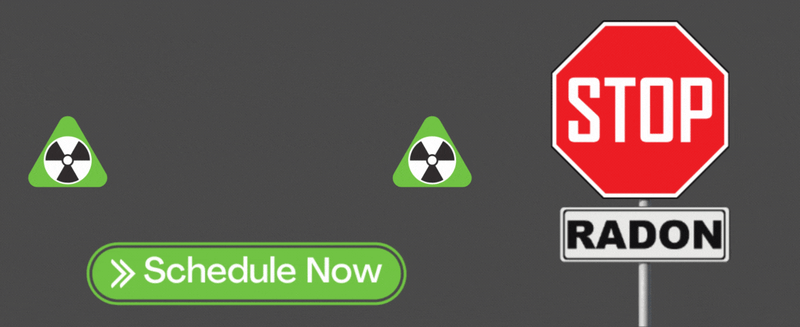Key Takeaways:
- Children face a higher risk of radon exposure due to their breathing rates and lung development. Radon is a radioactive gas that settles near the floor, where children spend more time. Their faster breathing rates and developing lungs increase their risk of cancer from radon exposure, making them more vulnerable than adults.
- Testing is the only way to determine if a home or school has high radon levels. Indoor radon levels vary due to building materials, foundation type, and ground contact. The EPA Assessment of Risks from Radon in Homes recommends using radon test kits or professional testing to measure radon gas levels accurately.
- Reducing radon exposure requires mitigation and awareness. A radon management plan should be implemented if dangerous radon levels are detected. Solutions include sealing construction joints, improving ventilation, and installing a radon mitigation system. Schools and childcare centers should also test for radon regularly to protect children’s health.
Radon is a radioactive gas that seeps into homes from the soil and rocks beneath the foundation.
It has no color, smell, or taste, making radon exposure especially dangerous.
Children are more vulnerable because their lungs are still developing, and their faster breathing rates cause them to inhale more concentrations of radon gas than adults.
Exposure to radon gas over time can damage DNA in lung cells, increasing the risk of cancer.
Children exposed to high radon levels may also have a greater chance of developing respiratory infections and lung cancer.
Below, we will explore how to protect children from radon poisoning.
Table Of Contents
- Are My Children At Increased Risk of Radon-Exposure?
- What Is Radon?
- How To Protect Your Kids From Radon
- How Do I Know If My Home Has Elevated Levels Of Radon?
- Radon In Schools
- What Do Radon Test Results Mean?
- Contact Your Local Radon Professional
Are My Children At Increased Risk of Radon-Exposure?
How many cases of adult lung cancer can be linked to their childhood home is uncertain.
But since radiation tends to settle close to the ground, children are more likely to be exposed to and breathe in the harmful radioactive particles.
Numerous studies demonstrate how susceptible kids are to radon exposure.
For instance, a case study conducted by the Agency for Toxic Substances and Disease Registry found that children receive higher estimated radiation doses than adults due to lung size and shape differences.
They are especially sensitive to indoor air quality since their lungs develop more quickly.
Additionally, children have roughly twice the risk of lung cancer compared to adults due to their quicker breathing rates.
The radon risk of lung cancer increases at least 20 times if radon levels are elevated and tobacco smoke is also present in children's homes.
Radon is responsible for about 21,000 lung cancer deaths every year.
About 2,900 of these lung cancer deaths occur among people who have never smoked.
The lung cancer risk associated with radon gas is very real.
Children are projected to receive larger doses of radon gas than adults because of lung size and shape differences.
Children and teenagers have rapid cell growth and radiation sensitivity.
Individuals exposed to high levels of radon in their youth are more likely to suffer from radon-related ailments later in life since radiation effects take years to manifest.
A study that suggests children may be more likely to develop childhood acute lymphoblastic leukemia in households with high radon levels is another cause for concern.
Some experts contend that children exposed to higher radon levels may be at a higher risk of getting acute lymphoblastic leukemia than children exposed to lower levels, notwithstanding the complexity of the risk factors for acute lymphoblastic leukemia and the conflicting scientific findings.
What Is Radon?
Radon is a naturally occurring radioactive gas produced as uranium decays. As you may be aware, Uranium is used to make nuclear material in large, refined quantities.
Uranium isn't rare. Very small amounts of uranium in the soil produce radon that you and I breathe daily.
We're exposed to it daily and this once free-roaming gas becomes trapped in homes.
Because this invisible gas is heavier than oxygen and most other breathable air, it typically settles near the floor.
Who in your family spends the most time close to the floor?

How To Protect Your Kids From Radon
You should check for radon in your house as a first step.
Hire a specialist to install a radon reduction system if your test results are higher than the advised action level.
Ask if the building has undergone radon testing if your child attends daycare or school.
Daycare facilities are frequently located in basements, and radon levels are generally higher there than in other parts of the building.
The Environmental Protection Agency (EPA) of the United States advises radon testing in all schools.
Finally, teach your children about radon.
To make wise decisions later in life, they need to have a basic understanding of environmental radiation.
How Do I Know If My Home Has Elevated Levels Of Radon?
Testing for radon is the only method for determining whether it is present in your home.
Radon will be present in most homes to some extent; the question is how much. It is impossible to forecast the amount of radon in a given home.
There are numerous factors at play.
For example, the location of your home, how it interacts with the wind, and the type of soil beneath it is just as significant as the radon's source.
You can buy a commercial radon-level measuring instrument to conduct a radon test.
The majority of hardware and home improvement stores sell radon testing equipment. Choose a radon test that takes long-term measurements (at least three months).
You might also order one online.
Put the device in your home's lowest, most often-used area to perform the test.
The ground level of your home or basement is best.
Ensure it's in a secure area so that nobody accidentally knocks it over.
Leave the device in that area for at least three months.
Send the sample back to the lab for examination after the testing is finished.
The results are mailed to you when the radon test gadget is analyzed.
Radon in Schools
Children spend a lot of time at school and child care programs.
The air quality is crucial for their healthy development because they spend the majority of their time indoors.
That's why the United States Environmental Protection Agency (EPA) recommends testing all schools for radon.
According to a nationwide EPA study on radon levels in schools, at least one out of every five classrooms has elevated radon levels.
The agency estimates that more than 70,000 schoolrooms in use today have high short-term radon levels. The EPA advises that all schools get radon tested for this reason.
Schools can take action to test for radon and lower risks to occupants of school buildings as part of an efficient IAQ (Indoor Air Quality) management program.
The EPA's IAQ Design Tools for Schools offer instructions on managing radon in remodeling and building projects.
Testing is the only method to find out if there are increased radon levels.
Professional radon testing, results interpretation, and mitigation is absolutely necessary for schools.
Qualified radon experts may also advise school administrators on controlling radon hazards during repairs, renovations, and general upkeep of existing facilities.

What Do Radon Test Results Mean?
- Below 2 pCi/L is considered a low level of radon and the kind of test result you're looking for.
- Above 4 pCi/L is considered a dangerous radon exposure level, and you'll need to take immediate action to reduce radon levels.
- Between 2 and 4 pCi/L is considered an acceptable but not ideal result.
- No level of radon is considered safe, so a follow-up test may be warranted to confirm test results.
- A long-term test kit is always best for accurate results.
- The national indoor average for radon is estimated at 1.3 pCi/L, and the outdoor air averages 0.4 pCi/L.
- You can visit the EPA's website or call your state radon contact for additional information about your radon results.
Contact Your Local Radon Professional
If you're worried about radon affecting your children, you should have your home tested.
Knowing the air quality of your home will give you peace of mind and leave you breathing a little easier.
To test your potential home for radon and potentially have a radon mitigation system installed by a professional radon mitigation company, contact the qualified radon remediation contractors at Radon Eliminator.
Radon Eliminator will look for radon and get rid of it if it's found.
If your test results come back high, they will install a radon mitigation system to make your home safe to live in, all for a reasonable price.
Click the button below to schedule your Discounted Test today to ensure your children's and your family's safety from this silent killer.

References:
https://www.aboutkidshealth.ca/article?contentid=1960&language=english
https://www.ohiorm.com/effects-of-radon-in-the-home/radon-and-children/
https://www.rdsenvironmental.com/radon/are-my-children-at-increased-risk-of-radon-expsoure/
https://www.labtechtests.com/Page/Radon_Test_Results_FAQ.aspx?nt=44




